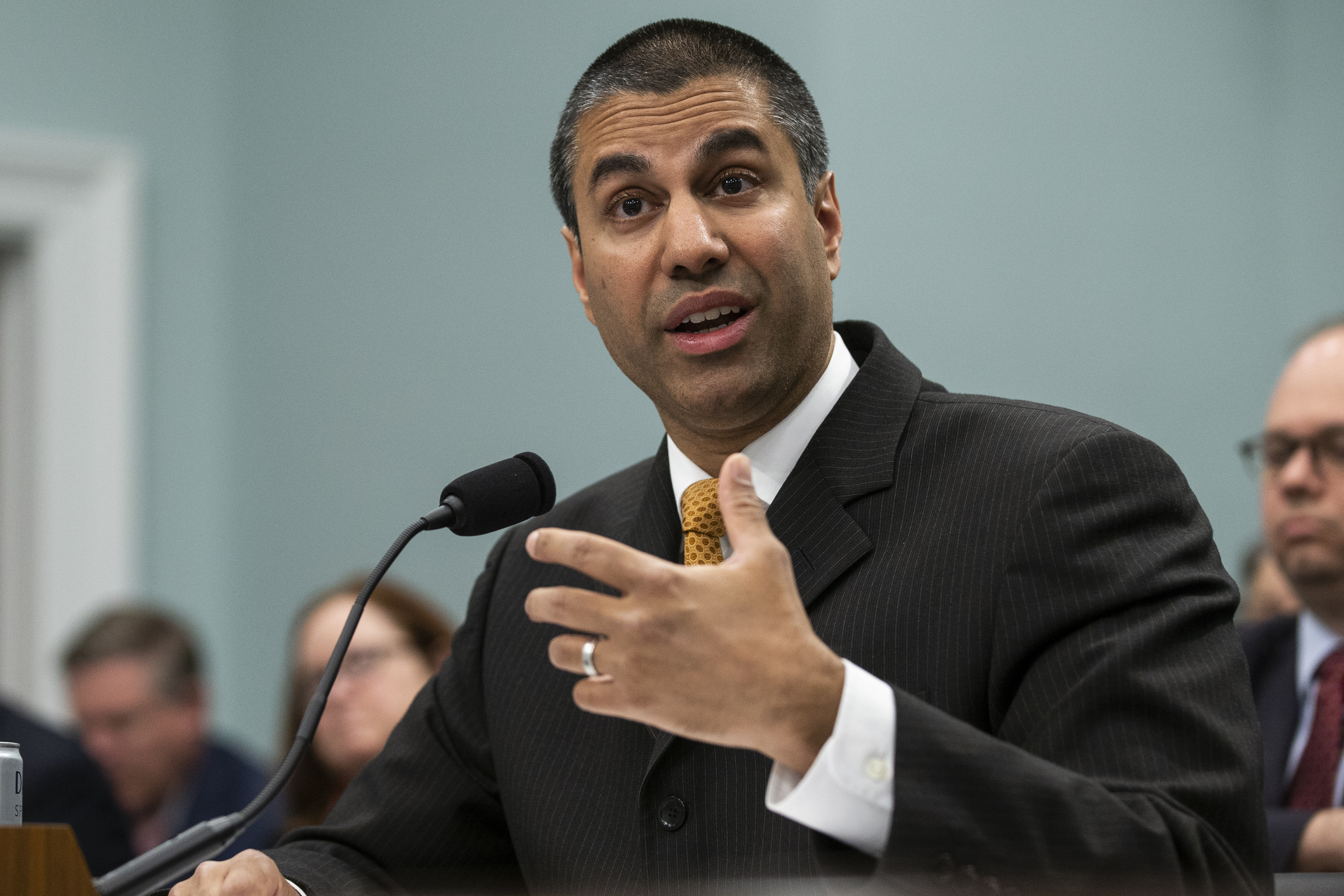C-Band Constituents Jockey As FCC Readies to Saddle Up
WASHINGTON —The FCC has vowed to free up as much C-band satellite spectrum for 5G wireless services as possible, but how much to bandwidth re-claim and how to do it has fired up stakeholders anew with news that the agency's chief wants to vote on an item in the next couple of months.
That was amidst a flurry of activity on the issue, including Federal Communications Commission chairman Ajit Pal getting called to Capitol Hill to testify on the merits of private deals versus a public auction.

Sen. John Kennedy (R-La.), chairman of the Senate Appropriations Subcommittee, has been pushing Pai for an auction, telling Politico that the FCC needed to hold a one ASAP; that a private sale "stinks;" and if it were the latter the American people were going to get "screwed, blued and tattooed."
Eutelsat — which exited the C-Band Alliance of major satellite carriers last month, saying it wanted to make its own case for freeing up some of that spectrum for 5G — has told the FCC that it is considering rejoining the alliance. That would once again provide a united front and add weight to the argument for a private sale of the spectrum, rather than the agency auction favored by cable operators.
Eutelsat's intentions were shared in a meeting between its CEO, Rodolphe Belmer, and Pai. Belmer met with the other FCC members and officials to make the same points. Belmer told Pai that Eutelsat still supports "the objectives" of expedited deployment of midband (C-band) spectrum for 5G, as well as the secondary market approach for freeing it up (private deals rather than an FCC auction).
The C-Band Alliance has proposed to act as facilitator for the transition of C-band spectrum to terrestrial 5G. Belmer said his company definitely backs that approach, and would agree to rejoin for at least that transition process.
Eutelsat is also open to considering clearing more spectrum than the 200 Megahertz called for in the Alliance's plan, Belmer said, but only after carefully weighing the costs and impact on customers. A source confirms the Alliance is also open to freeing up more than 200 MHZ, with 300 MHz being the likely upper limit its members could sign on to.
The smarter way to stay on top of the multichannel video marketplace. Sign up below.
The C-Band Alliance comprises the major satellite operators — Intelsat, Telsat and SES, all international — that provide network distribution services to broadcasters and cable operators, and backs a private spectrum auction. Cable MSOs, represented by ACA Connects, Charter Communications and the Competitive Carriers Association, support a different approach.
The cable firms — who are eyeing midband spectrum for their own 5G plans — are open to freeing up more than 200 MHz (370 MHz and and perhaps all 500 MHz, as T-Mobile has advocated for) by shifting from satellite delivery to fiber, its so-called 5G Plus plan. Broadcasters have pushed back on that proposal, saying it would put their network feeds at the mercy of any Jane or Joe with an errant backhoe.
Among those cable operators are the smaller independent ones represented by ACA Connects, which has a major bone to pick with National Public Radio.
NPR is allied with commercial broadcasters in the pushback against fiber delivery and took aim at ACA Connects migration-to-fiber plan.
Although migrating video to fiber leaves 130 MHz for nonvideo customers, NPR argues a smaller, more-congested band does not cut it. NPR favors the Alliance plan Eutelsat could be signing back onto.
ACA Connects told the FCC that just wasn't the case. Given that the Alliance plan would force all users — video and radio — into 300 MHz of spectrum or less, there was no basis to conclude its plan was less likely to produce congestion, ACA said.
One reason for the flurry of activity on the C-Band plan proposals is that Pai has signaled he wants to wrap up a proposal in the next couple of months.
Contributing editor John Eggerton has been an editor and/or writer on media regulation, legislation and policy for over four decades, including covering the FCC, FTC, Congress, the major media trade associations, and the federal courts. In addition to Multichannel News and Broadcasting + Cable, his work has appeared in Radio World, TV Technology, TV Fax, This Week in Consumer Electronics, Variety and the Encyclopedia Britannica.

